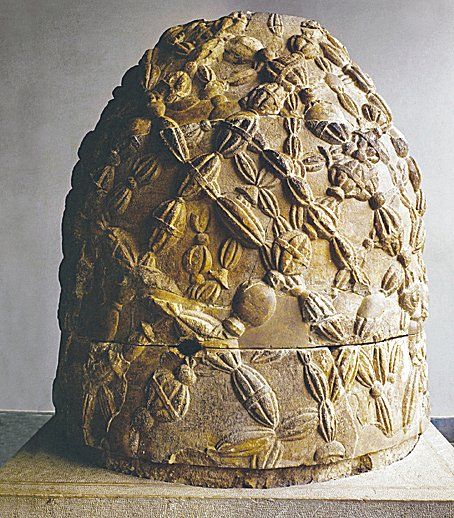
The Omphalos, in Greek means navel and indicates a sacred center, a place where the divine meets the ground. There are many omphalos in the world. In Italy, the tradition is linked to many symbols worked by man, like circular boulders.
Often they are represented by obelisks, menhirs, wells or by the strange symbol of the triple enclosure, which can be traced in many places considered sacred, which consists of 3 concentric squares and segments that join the median points of the sides.
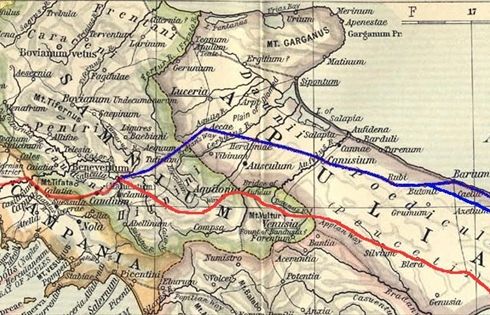
These and other mysterious symbols are present in Sovereto, a small hamlet in the municipality of Terlizzi, in the province of Bari. Terlizzi, in the province of Bari, is one of the most fascinating and mysterious places in Puglia, along the ancient Appian Way a crossroads for pilgrims traveling to the Holy Land.
Since the protohistoric period, the site had to be considered an “Omphalos“, a projection on earth of a celestial center, the “place” where the gods dwell in a concept similar to that of the Homeric Ogigia, the place where human and divine can dialogue.
Moreover, in the neighboring countryside we find the signs of ancient rituals: four menhirs aligned, a small leys certainly much denser in the past .
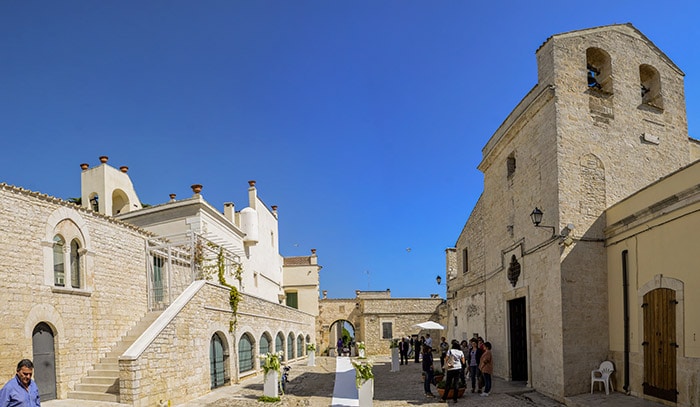
Etymologically, for various scholars, the origin of the name of Sovereto would seem to come from “Suberitum” (lat.), that is from suber (lat.), cork while someone else derives the origin from “erected above”, but above what? What’s in the underground?
According to a legend, around the year 1000 a farmer found an icon of the Madonna and a lighted lamp in a cave. On the area was erected the church of Santa Maria di Sovereto. The effigy was a Black Madonna.
Towards the end of 1100 the site had become so important that two convent communities were built, that of the nuns of San Marco and the Knights Hospitallers of San Giovanni (the Knights Templars). Once the fame of this sanctuary became known, all those who went to Jerusalem passing through the Appian Way, very close to our sanctuary, did not fail to enter it.
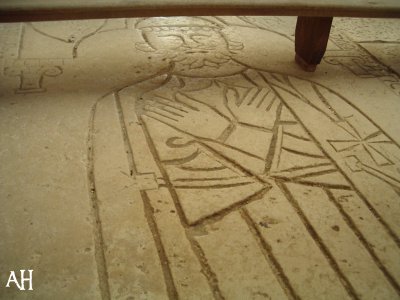
Into the Church of Santa Maria di Sovereto there are many traces and clues, sometimes hidden that would make us think of a settlement of the Knights of the Temple: apart the many crosses outside and inside the church there are
also five tombstones of which three represent knights with insignia on the cloak of the Knights of the Temple. Also the arms placed in a crossed position, custom of the Knights of the Temple, which represents the “X” of Xristos (from X in Greek Chi) the name of the Messiah.
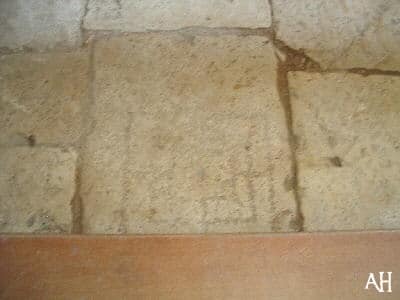
On another slab now used as a bench there is also the symbol of the triple enclosure which indicates the sacredness and centrality of the place. Symbol of conjunction, it reappears near the crypt with the “cosmic tree“, a cosmic element of conjunction between heaven and earth.
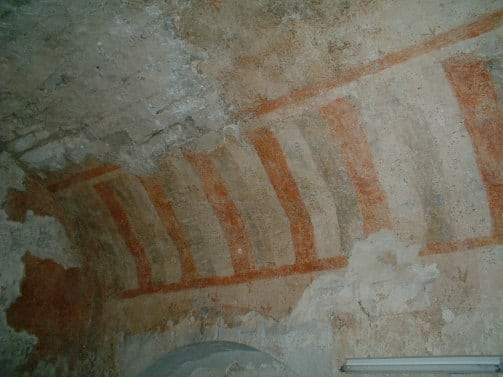
In the Bible it indicates the courtyard with the triple circle of walls of the Temple of Solomon, but also the Heavenly and the Terrestrer Jerusalem. On the right wall we find clear Templar symbols such as the ladder with the “double rung” and the chessboard is the symbol of positive and negative, of black and white, of good and evil, of war and prayer, of intellect and devotion.
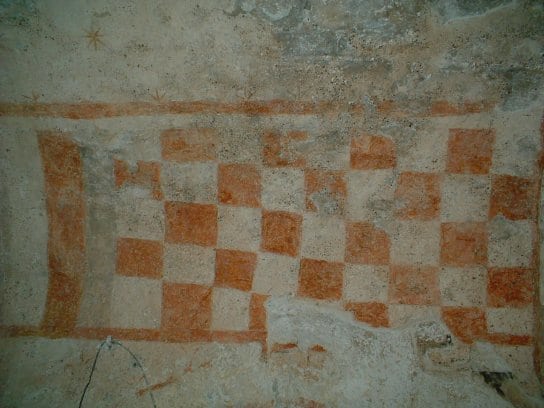
It seems that the church stands on a geomantic node, also highlighted by the numerous menhirs that are still visible in the area. Also linked to the idea of omphalos is the concept of thaumaturgical water. In fact, an underground river flows below the church, accessible through a well outside the church. Many witnesses affirm the miraculousness of this water. Outside the church a lunette depicts the Black Madonna and a man climbing the steps of a staircase that rests on the water. It is clear that even the ancient builders of the church knew of the existence of underground water and its particular importance linked to the place of worship.
#ENG #omphalos #Crusades #Templars #thetriplebelt #blackvirgin #churchSaintMaryofSovereto #Terlizzi
Recent articles
- Orecchiette with Cime di Rapa (broccoli rab)
- The hidden river
- La nascita delle Orecchiette
- Il grano Senatore Cappelli
- Apulian Menù. The Orecchiette with brasciole
Apulia Bari città d'arte Puglia cosa vedere in cosa vedere in Puglia cosa vedere in Salento cosa vedere ostuni cose interessanti da vedere curiosity curiosità doc eng eros eros di altri tempi Europa extravergine fischietti frisa frise frise al pomodoro friselle friselle al pomodoro la città bianca Lecce mare in salento miti Miti e leggende del Salento miti e leggende Salento oil olio olive oil Orecchiette Ostuni otranto Puglia salento sapori storie Storie sulla Puglia storie sul Salento terra d'otranto Valle d'Itria visita Puglia visit Puglia viviere il Salento